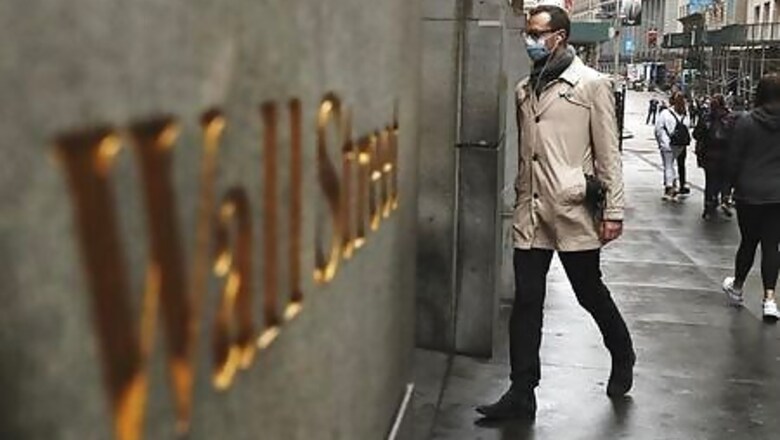
views
The S&P 500 closed in on its February peak on Tuesday, returning to levels last seen before the onset of the coronavirus crisis that caused one of Wall Street’s most dramatic crashes in history.
The benchmark index was about half a percent below the all-time high it hit on Feb. 19, when investors started dumping shares in anticipation of what proved to be the biggest slump in the U.S. economy since the Great Depression.
Ultra-low interest rates, trillions of dollars in stimulus and, more recently, a better-than-feared second-quarter earnings season have allowed all three of Wall Street’s main indexes to recover.
The tech-heavy Nasdaq has led the charge, boosted by “stay-at-home winners” Amazon.com Inc, Netflix Inc and Apple Inc. The index was down about 0.1%.
The blue-chip Dow surged 1.2%, coming within 5% of its February peak.
Value stocks outperformed tech-focused growth stocks on Tuesday, reflecting market’s confidence in improving economic outlook. The Russell 1000 value index rose 1%, while the Russell 1000 growth index fell 0.1%.
“COVID-19 really turned the light switch off on the economy – it happened very quickly – and the hope is that by and large, once we get a vaccine and distribute it to the masses, that we turn the switch back on,” said John Petrides, portfolio manager at Tocqueville Asset Management in New York.
Aiding sentiment, President Vladimir Putin claimed Russia had become the first country in the world to grant regulatory approval to a COVID-19 vaccine. But the approval has concerned some experts as the vaccine still must complete final trials.
Investors are now hoping Republicans and Democrats will resolve their differences and agree on another relief program to support about 30 million unemployed Americans, as the battle with the virus outbreak was far from over with U.S. cases surpassing 5 million last week.
Also in focus are Sino-U.S. tensions ahead of high-stakes trade talks in the coming weekend.
“Certainly the rhetoric from Washington has been negative with regards to China … there’s plenty of things to worry about, but markets are really focused more on the very easy fiscal and monetary policies at this point,” said Paul Nolte, portfolio manager at Kingsview Asset Management in Chicago.
Financials, energy and industrial sectors, that have lagged the benchmark index this year, provided the biggest boost to the S&P 500 on Tuesday.
The S&P 500 was set to rise for the eighth straight session, its longest streak of gains since April 2019.
At 11:19 a.m. ET, the S&P 500 was up 15.33 points, or 0.46%, at 3,375.80, about 18 points shy of its high of 3,393.52. The Dow Jones Industrial Average was up 326.68 points, or 1.18%, at 28,118.12. The Nasdaq Composite was down 14.96 points, or 0.14%, at 10,953.40.
Royal Caribbean Group rose 3.7% after it hinted at new safety measures aimed at getting sailing going again after months of cancellations. Peers Norwegian Cruise Line Holdings Ltd and Carnival Corp also rose.
Advancing issues outnumbered decliners by a 2.19-to-1 ratio on the NYSE and by a 1.45-to-1 ratio on the Nasdaq.
The S&P index recorded 40 new 52-week highs and no new low, while the Nasdaq recorded 78 new highs and seven new lows.
Disclaimer: This post has been auto-published from an agency feed without any modifications to the text and has not been reviewed by an editor




















Comments
0 comment